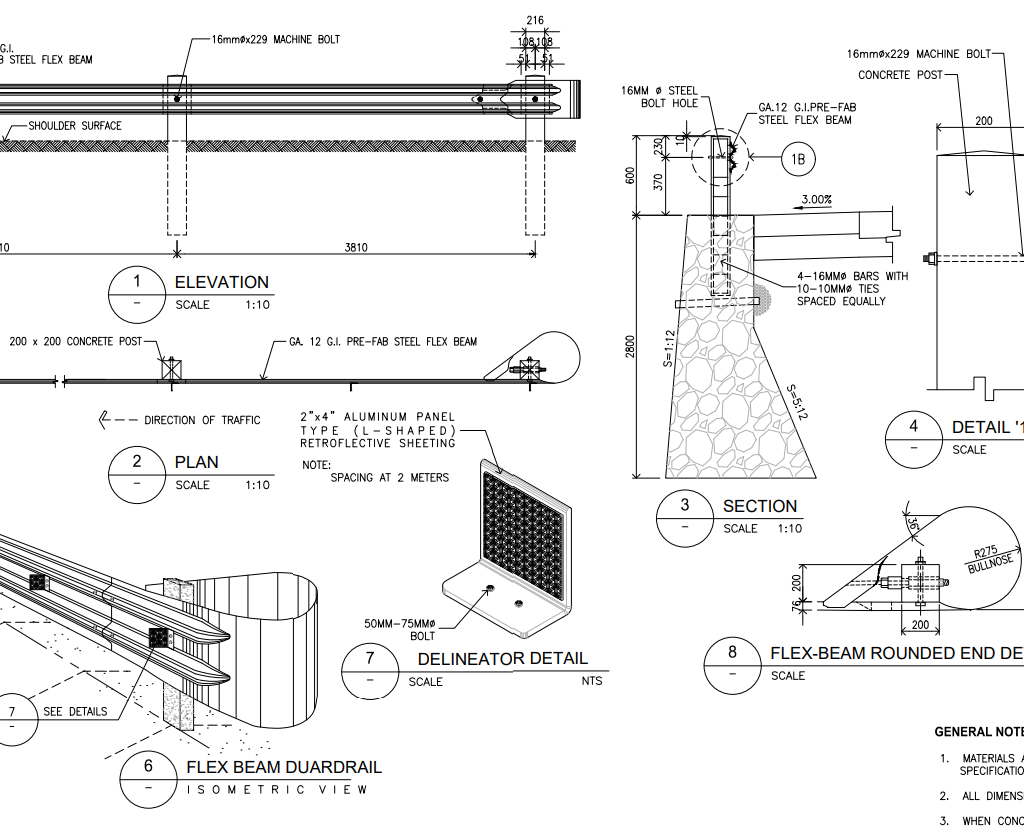Guardrails are safety barriers that are designed to protect people and vehicles from falling off of elevated surfaces, such as bridges, decks, and balconies. They are typically made of metal, wood, or a combination of both and consist of a top rail, intermediate rail, and posts.
The top rail is the uppermost horizontal member of the guardrail and is typically 42 inches high. It is designed to provide a handhold for people and to prevent objects from falling over the edge. The intermediate rail is the middle horizontal member of the guardrail and is typically located about halfway between the top rail and the deck or surface that the guardrail is protecting. It is designed to provide additional support to the top rail and to prevent people from climbing over the guardrail.
The posts are the vertical members of the guardrail that support the top rail and intermediate rail. They are typically spaced no more than 8 feet apart and are anchored to the deck or surface that the guardrail is protecting. They are designed to provide the structural support needed to keep the guardrail in place and to resist the forces that are applied to the guardrail.
In addition to the standard components, guardrails also often include additional details such as end treatment, posts and blocking, and netting or other means of catching falling objects. It is essential to have guardrails that meet the safety standards and guidelines of the local building codes and regulations.
You must log in to submit a review.


